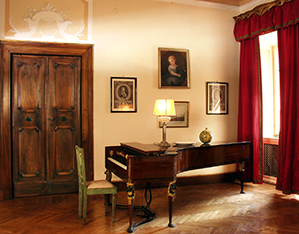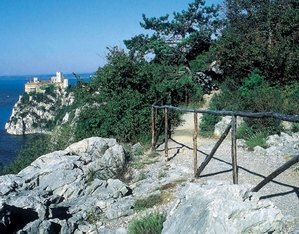An old castle overlooking the sea, set in a Mediterranean scrub landscape shaped by well-tended garden terracing. An evocative setting where human ingenuity enhances the powerful and rugged beauty of nature, a landscape that inspired Rilke to compose one of the literary masterpieces of the 20th century, his Duino Elegies.
On a steep promontory overlooking the Gulf of Trieste there is a many-times-remodelled 14th-century castle. All that remains of the ancient fortress are the striking ruins still standing on a rock emerging from the sea. Following the restoration of the walls and towers of the medieval manor in the early 19th century, in the second half of the same century the cultured princess and illustrious patron of the arts Marie von Thurn und Taxis began to create a park to enhance the natural qualities of the site. At that time, the park of Castello di Miramare for Archduke Maximilian of Habsburg was nearing completion. Half-destroyed during the First World War, the site was restored in the 1920s by Marie’s nephew Prince Raimondo who can be credited for the overall reorganisation of the area, dividing the park into terraces. The first area to be completed was the one around the castle and protected by Mediterranean scrub; Raimondo also added several “green rooms”, where a well-kept flora combines with sculptures, balustrades and stairs leading down to the sloping lower levels, enhanced by three belvederes overlooking the surrounding woodland vegetation. The princes, related to the most important ruling houses of Europe, currently still own the complex, with Carlo Alessandro, son and heir of Prince Raimondo, in charge of the management and maintenance of the park and of its floral and shrub vegetation. Castello di Duino is a unique location where human ingenuity enhances the powerful and rugged beauty of the environment.




